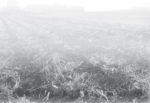The yield-robbing effects of soil compaction continue to be a major challenge for growers, but proponents of deep-tilling say they have an answer for returning compacted soils to fertile, highly productive acres.
Vertical tillage is described as a system of soil management that promotes root development. It's also sometimes called "soiling" or zone tillage because it's used to fracture the entire soil profile from the bottom up using specially designed vertical tillage tools. According to the Precision Planting Co., each tillage pass is designed to increase the vertical flow of nutrients, water and developing roots. Tillage points of the tools work to “heave” the entire section of earth from just below the line that separates topsoil from subsoil.
Read More










